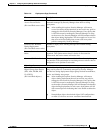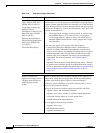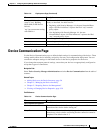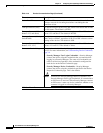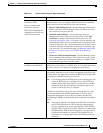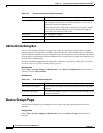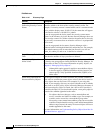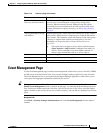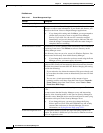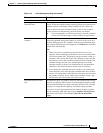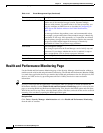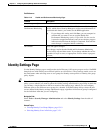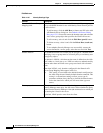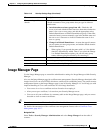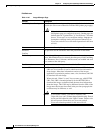
11-23
User Guide for Cisco Security Manager 4.4
OL-28826-01
Chapter 11 Configuring Security Manager Administrative Settings
Event Management Page
Event Management Page
Use the Event Management page to enable event management, which allows you to view ASA, FWSM,
and IPS events using the Event Viewer. You can also configure settings required for event collection.
The Event Manager service is also required by the Report Manager application, which allows you to
view reports that aggregate information collected by the service.
Tip If you get a message that Event Viewer is unavailable when you select Launch > Event Viewer, but the
Enable Event Management option is selected on this page, try restarting the Event Manager Service.
First, deselect the Enable option and click Save. Wait for the service to stop. Then, select the Enable
option, click Save, and wait for the service to finish restarting. You can then try opening Event Viewer
again.
Navigation Path
Click Tools > Security Manager Administration and select Event Management from the table of
contents.
On Error, Rollback
Discovery for Entire Device
Whether Security Manager should roll back all discovered policies if
even one error is encountered for a single policy during policy
discovery. When deselected, Security Manager keeps the policies
successfully discovered and discards only those policies with errors.
For more information on policy discovery, see Discovering Policies,
page 5-12.
Auto-Expand Object Groups
with Prefixes
Expands object groups, such as network or identity user group, with the
listed prefixes during the device import process. Separate the prefixes
with a comma. This expansion causes the elements of the object group
to display as separate items in the discovered policies. For more
information, see Expanding Object Groups During Discovery,
page 12-35.
Tip This option does not apply to policy objects created from the
object network or object service commands from ASA 8.3+
devices. These commands create host, FQDN, network, or
address range network/host objects or service objects.
Save button Saves your changes.
Reset button Resets changes to the previously applied values.
Restore Defaults button Resets values to Security Manager defaults.
Table 11-12 Discovery Page (Continued)
Element Description



